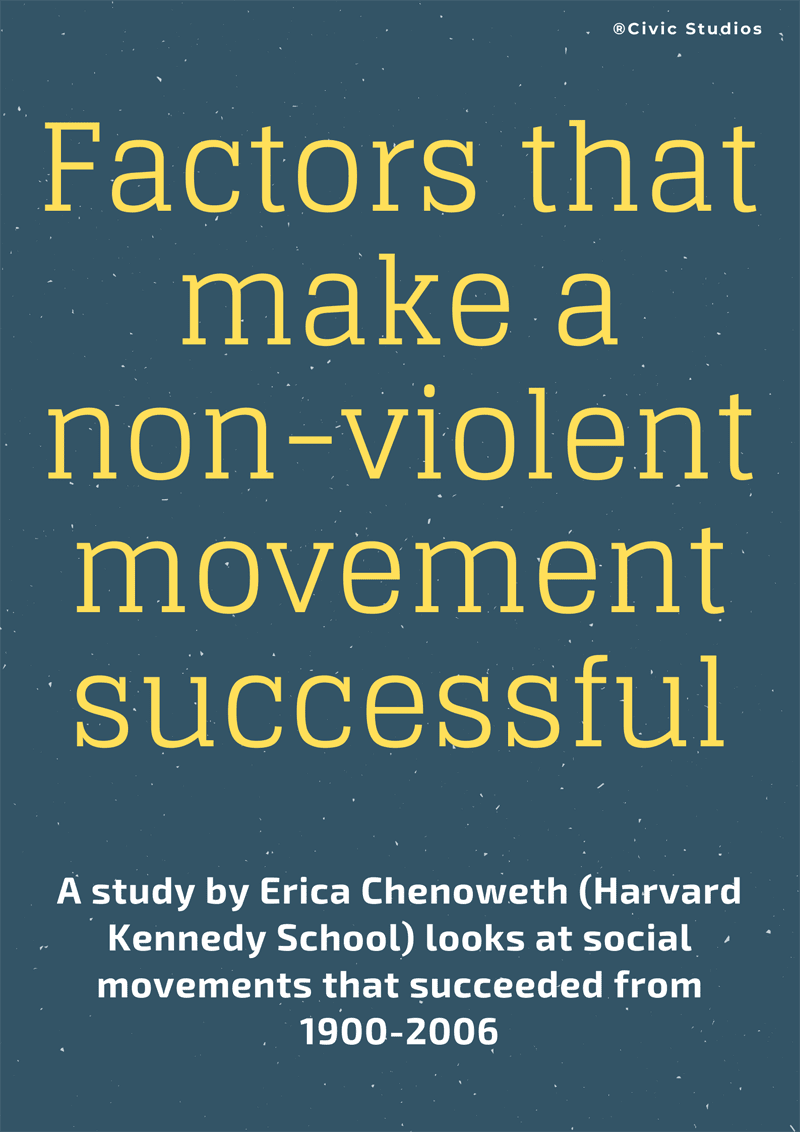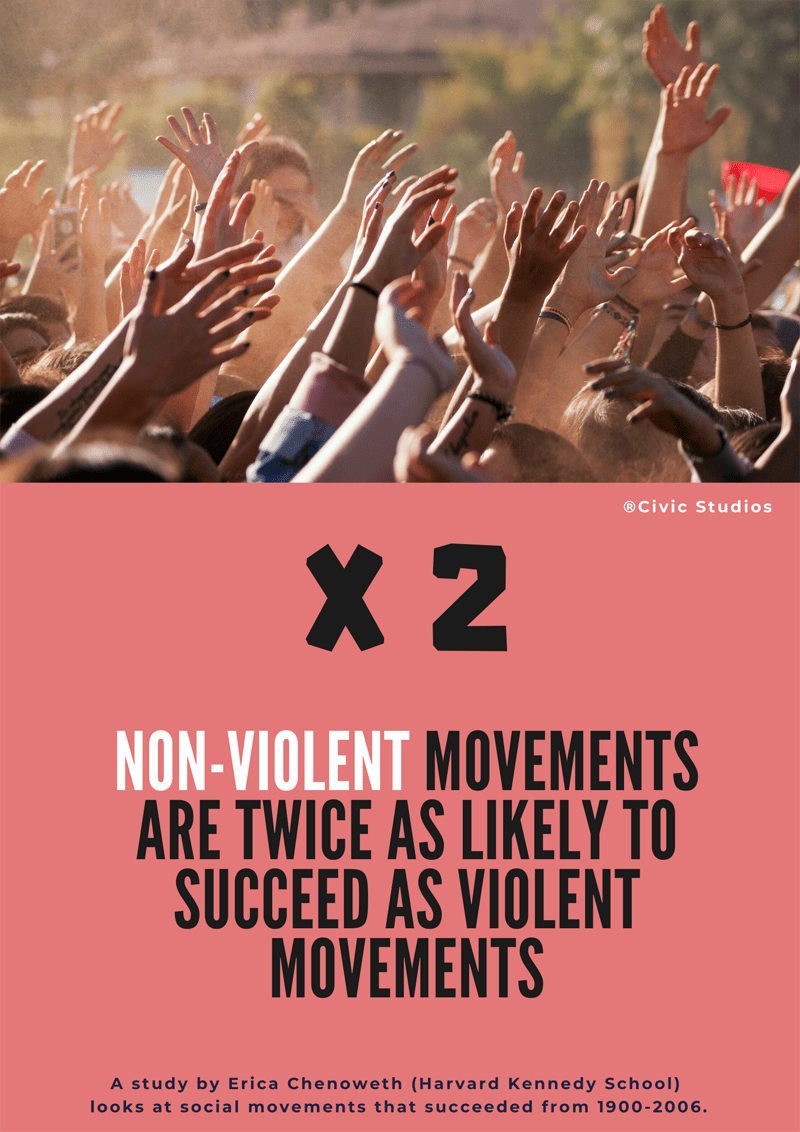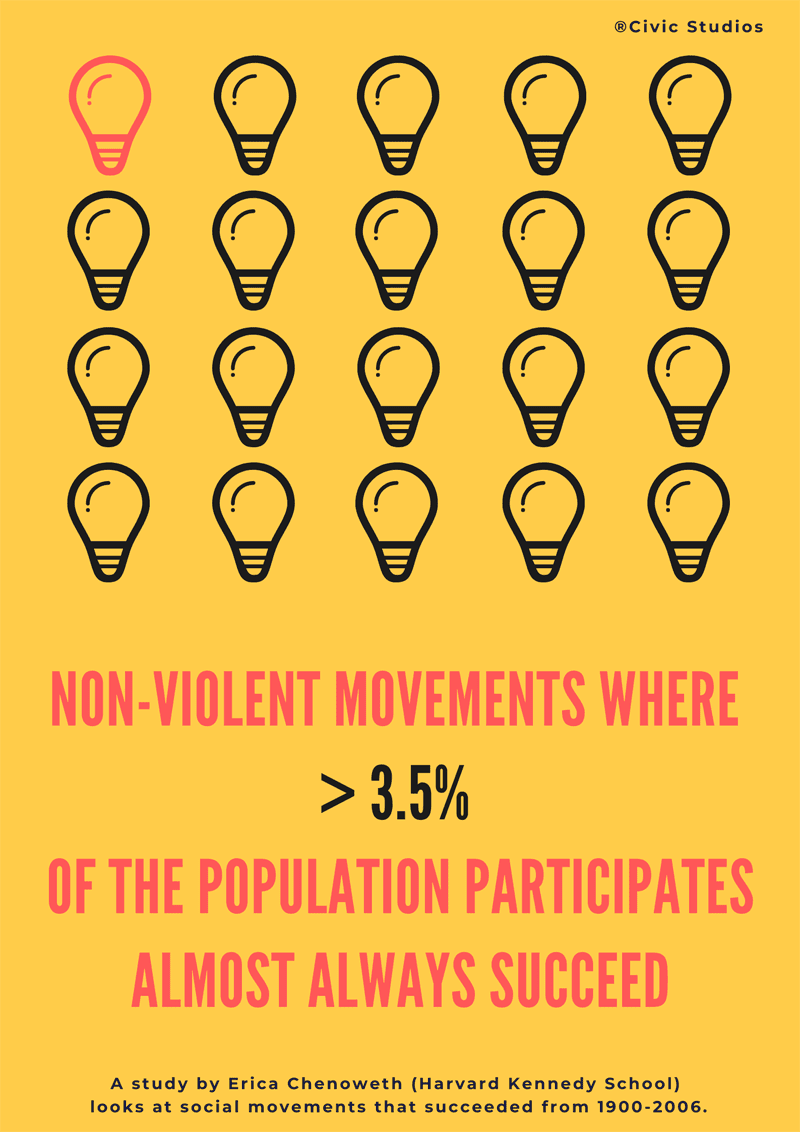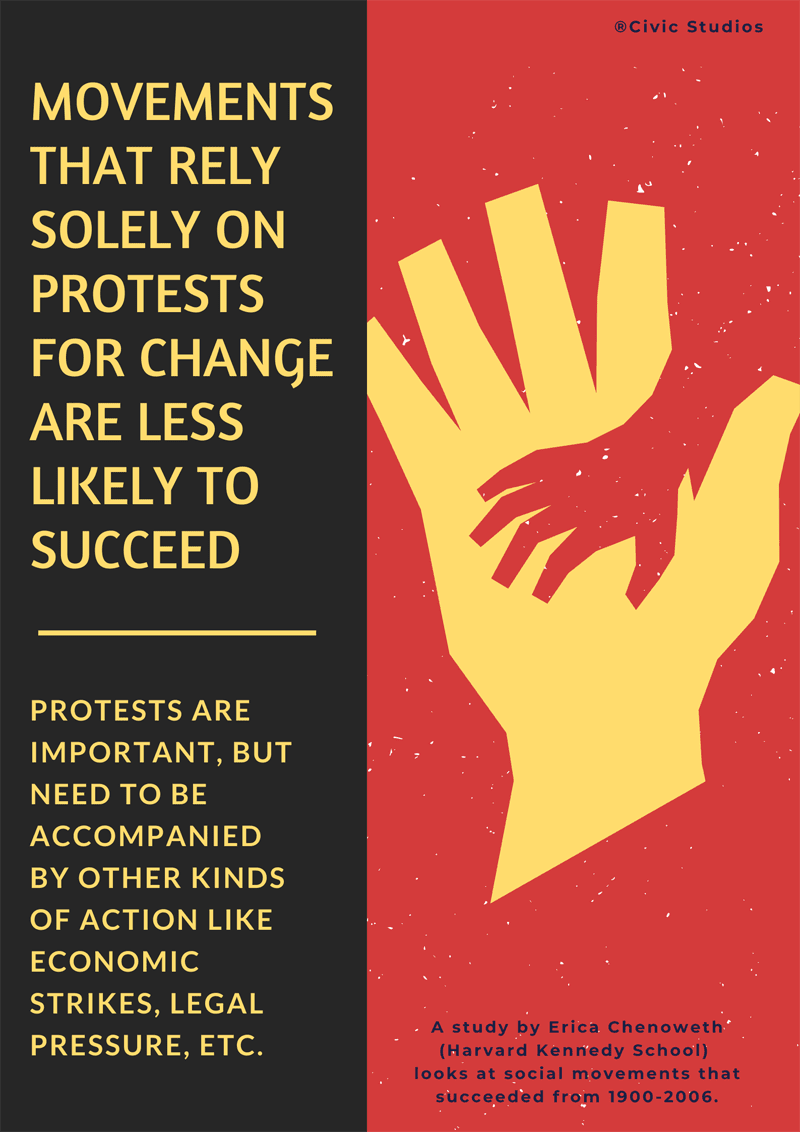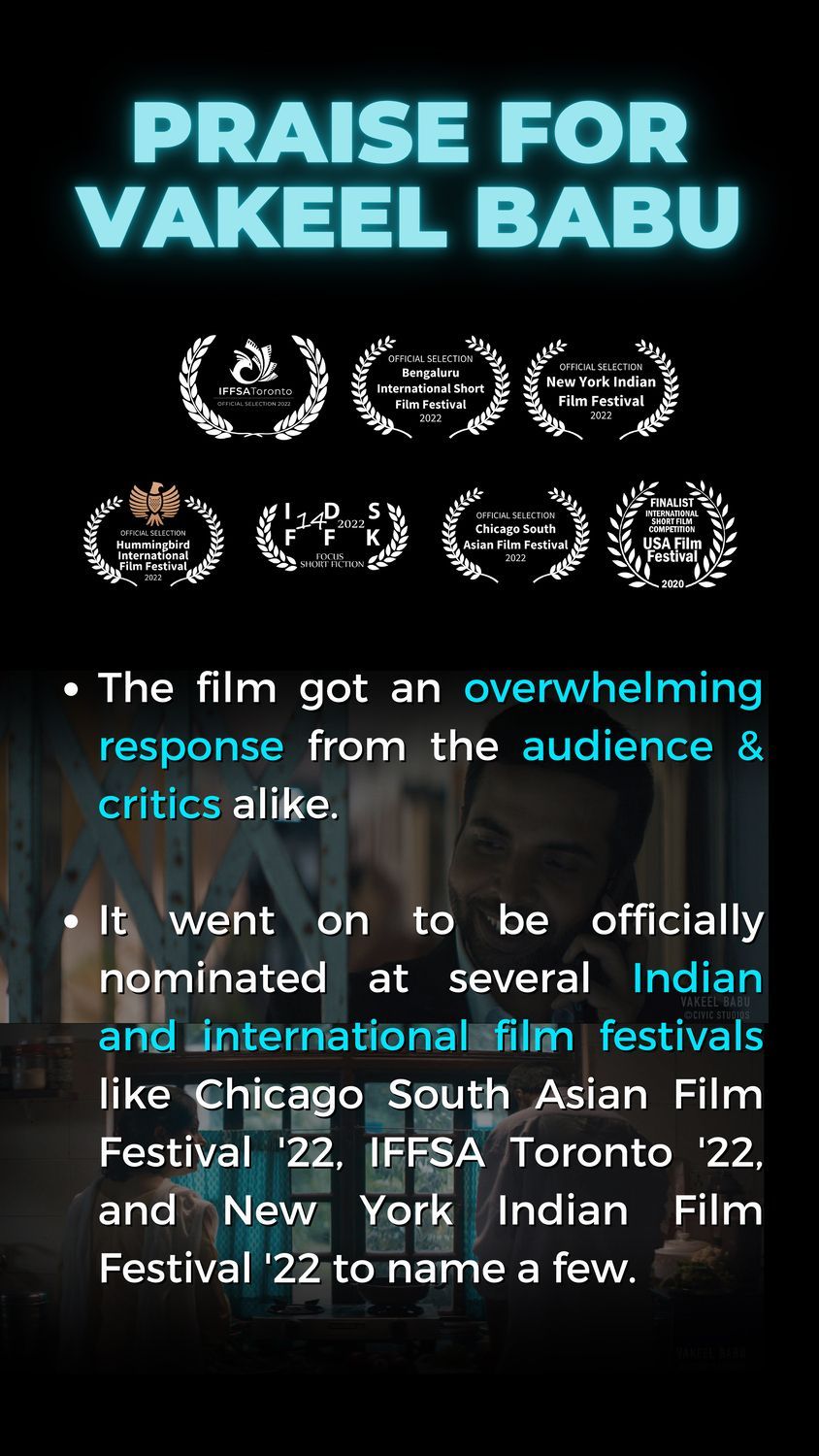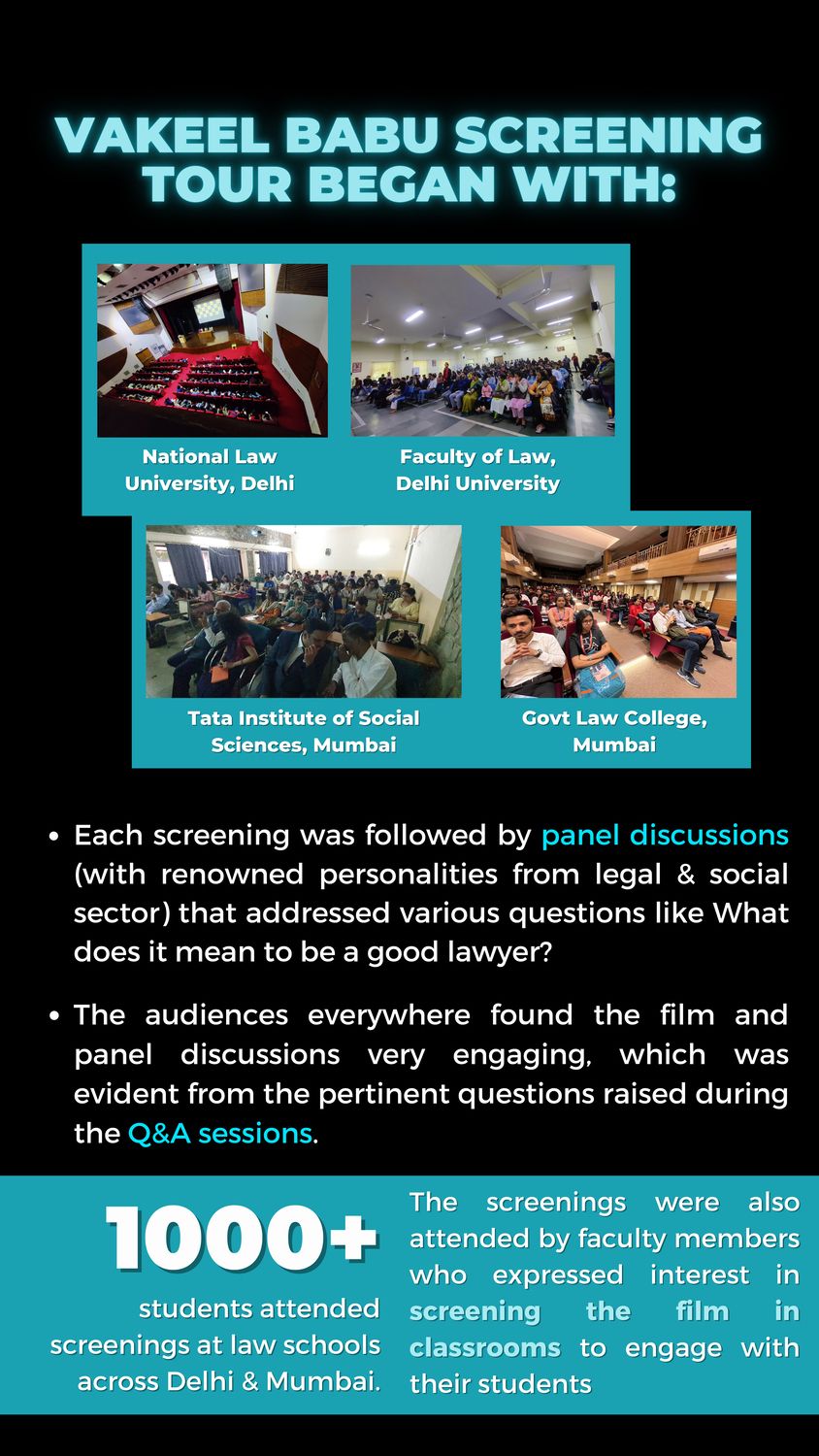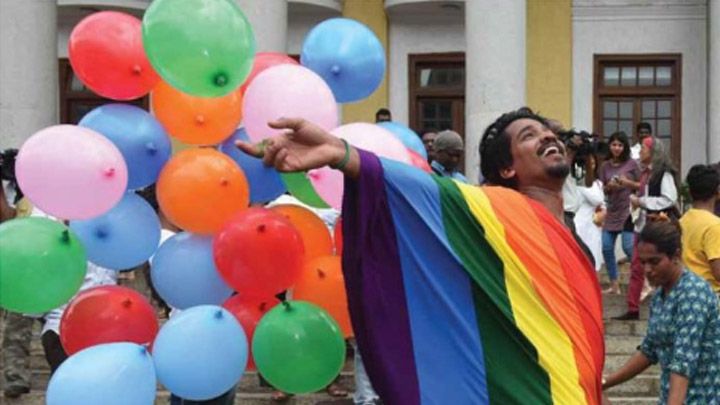A study showed that the non-violent resistance movements had a success rate of 53% – twice as effective and likely to succeed as compared to their violent counterparts.
Written by: Namrata Sharma, Anushka Shah
Non-violent resistance movements hold peaceful civilian action at their heart and helm. Over time, hundreds of non-violent resistance techniques have been identified, a few of which are protests, demonstrations, boycotts, labor strikes, and non-cooperation. A study conducted by Erica Chenoweth et. al. on ‘Why Civil Resistance Works’ explored data on violent and non-violent resistance movements between 1900 and 2006, to understand the strategic effectiveness of these approaches in cases of conflict between state and civilians. The study showed that the non-violent resistance movements had a success rate of 53% – twice as effective and likely to succeed as compared to their violent counterparts.
What is it that makes non-violent resistance movements twice as successful?
First, the size and diversity of a movement directly impacts its success in the long run. Research shows that non-violent resistance movements make people from diverse backgrounds feel more comfortable in joining the movement. This leads to widespread, large-scale participation as well as participation which is representative of society as a whole. Further, movements which are youth-led and women-led are far likelier to be non-violent in nature, and thus, more likely to succeed. The Chenoweth study of non-violent movements over time observed that when movements did achieve a large scale, if this resulted in 3.5% or more of that nation’s population participating, they almost always succeeded.
Second, sustaining a non-violent movement over time is necessary to bring about change. This requires rigorous offline planning, designing long-term implementation strategies and parameters to monitor progress. Most importantly, sustaining a movement requires that people continue to stay non-violent even when the state resorts to violence or pushes them towards violence. Resilience when faced with violence, thus, becomes an important factor in determining the outcome of a non-violent movement.
Third, protests and mass demonstrations while popular non-violent resistance mechanisms, when used in isolation reduce the odds of a movement being successful. A far more likely to succeed resistance movement is one which utilizes a combination of non-violent techniques in the form of both action or inaction. For example, combining protests with a labour strike is likely to be a more successful technique as it directly impacts the economy of a nation. Thus, research tells us, using a blend of different tactics which impact the regime in power are better at ensuring that a movement is not ignored by the state.
Finally, a key factor enabling the success of non-violent resistance movements lies in their ability to change the opinion of and garner support from an individual or a body which otherwise supports the state and whose cooperation the state relies upon in order to function. These individuals or bodies, such as security forces, civil servants, economic bodies etc., are imagined as “pillars of support” to the regime, and “shifting their loyalty” by means of non-violent resistance is crucial to the success of the overall movement.

